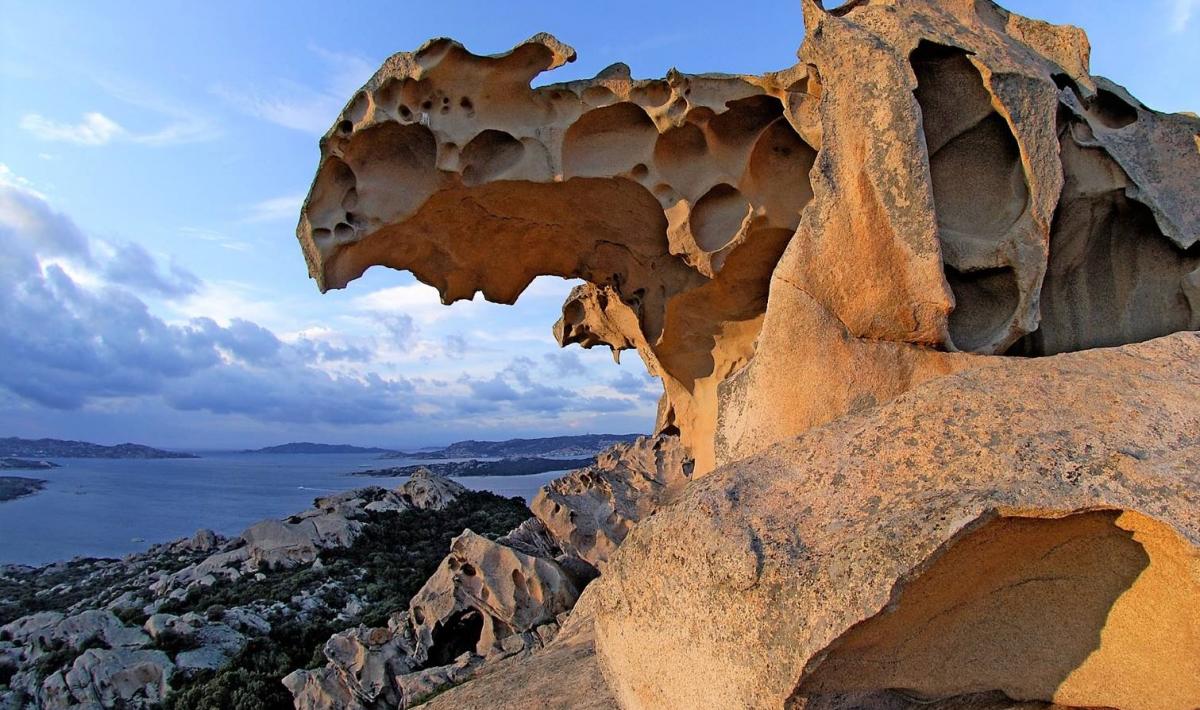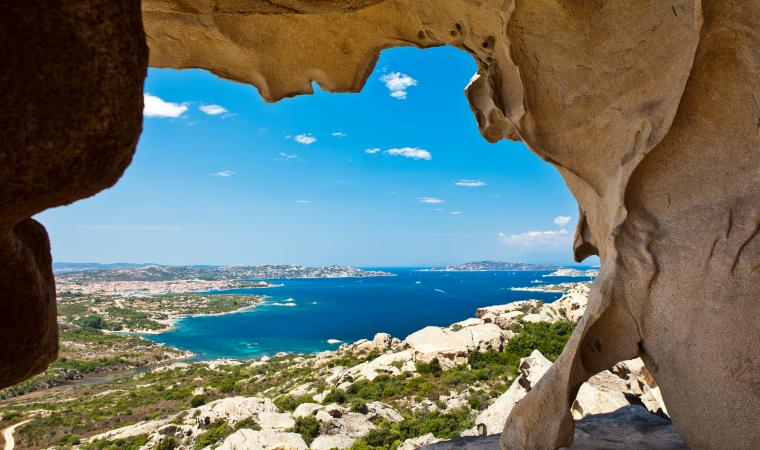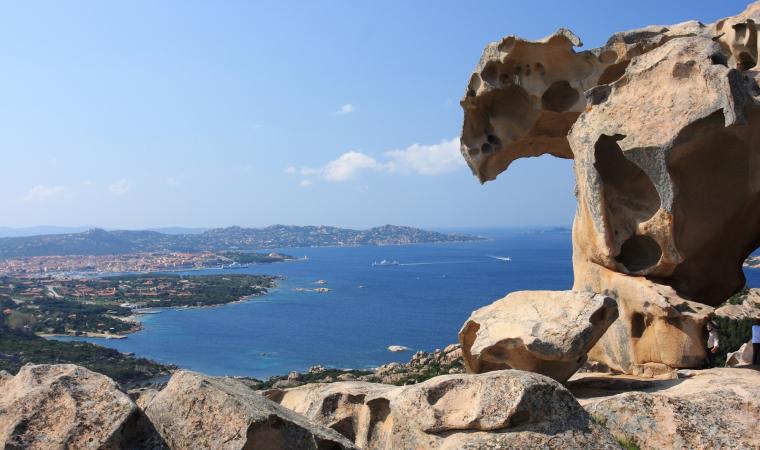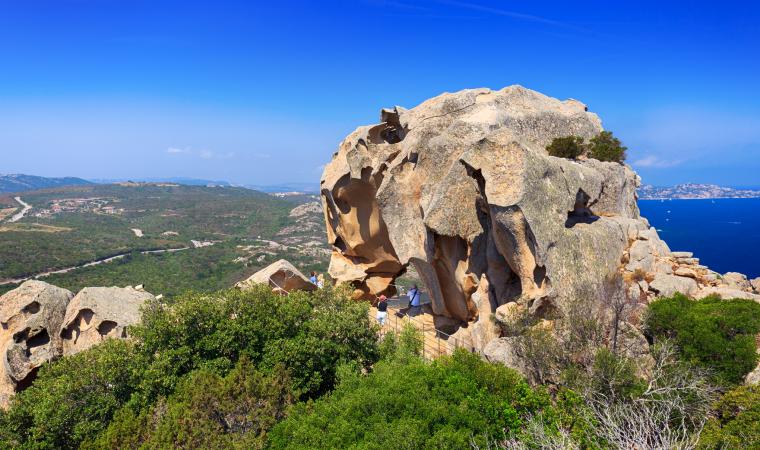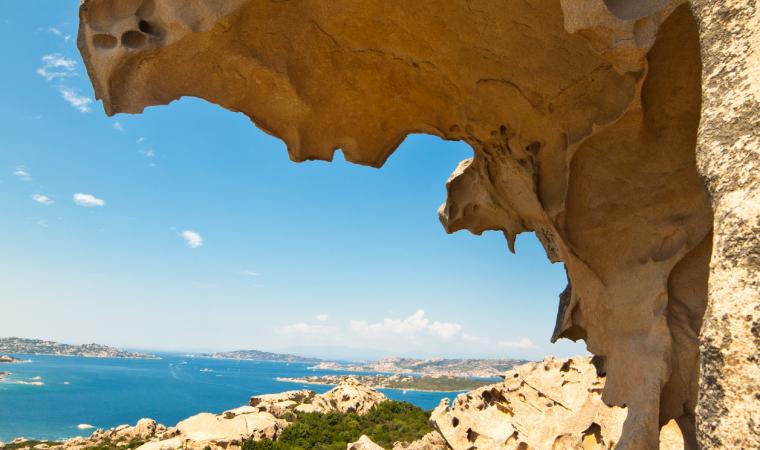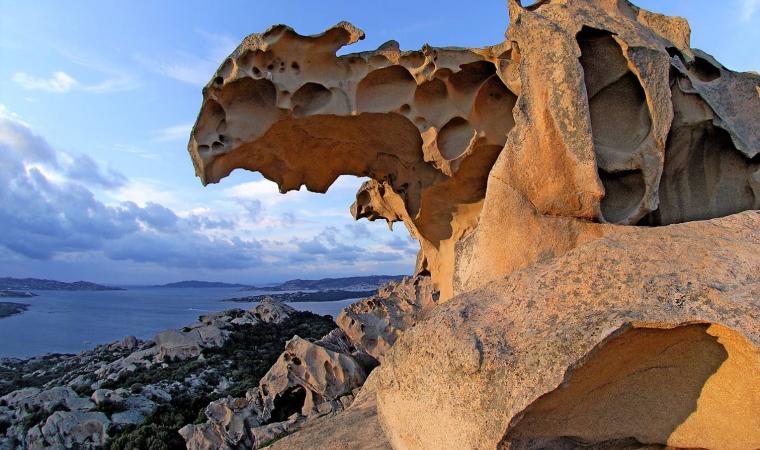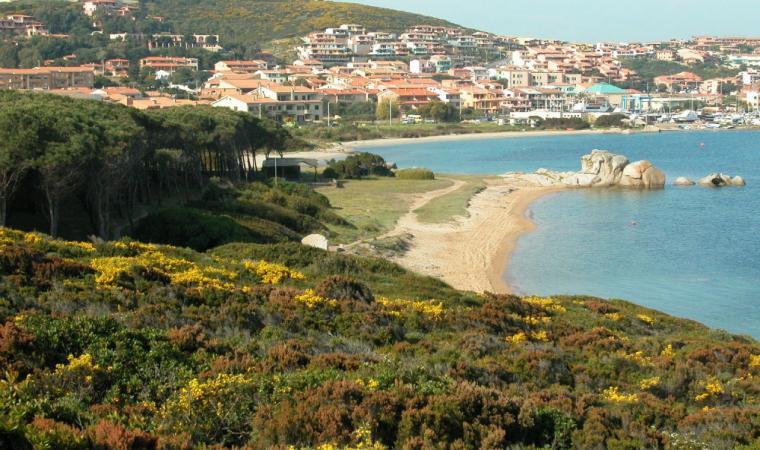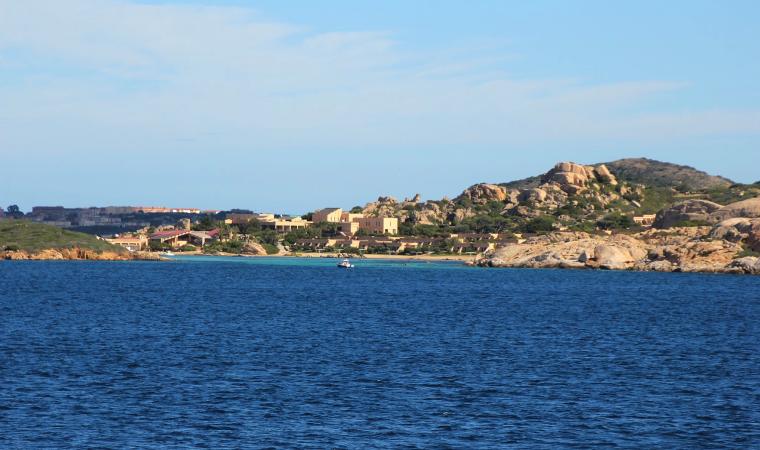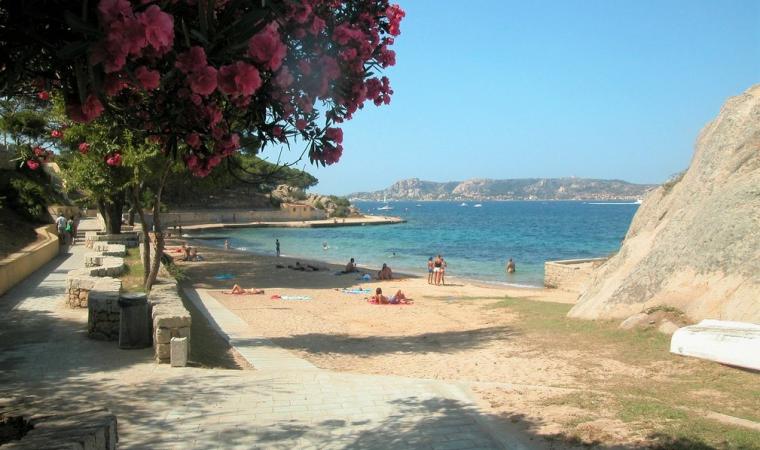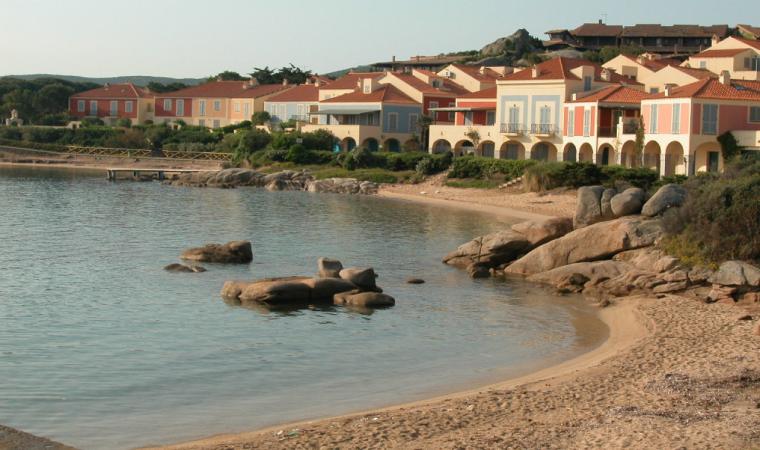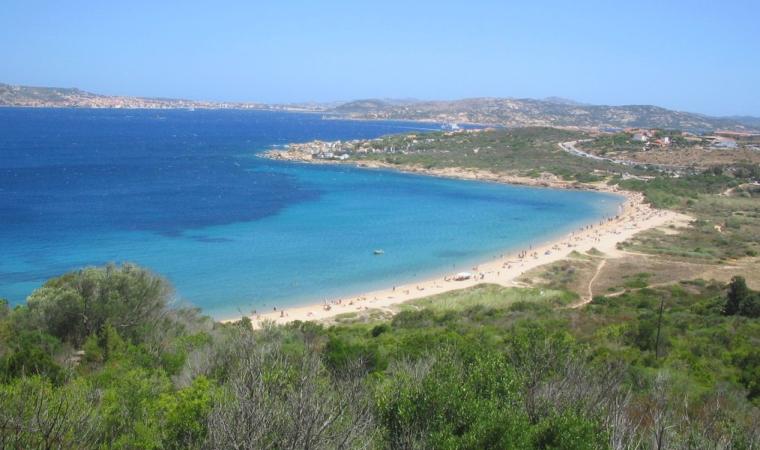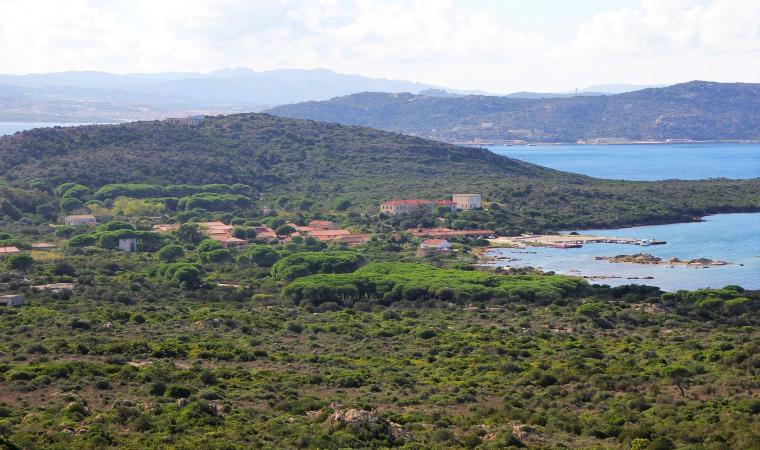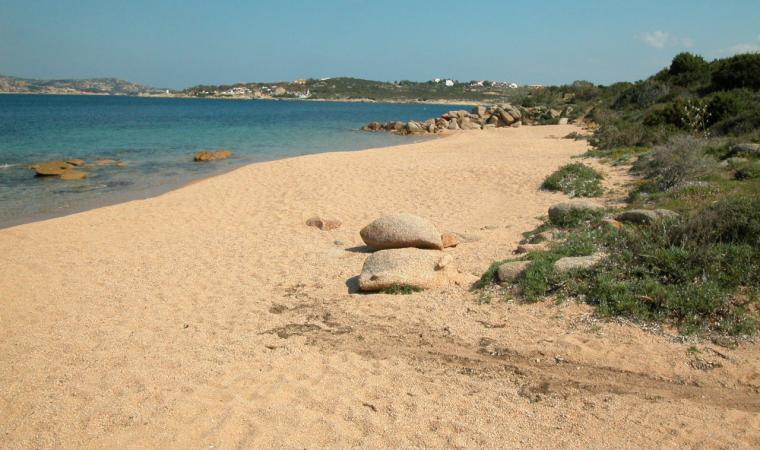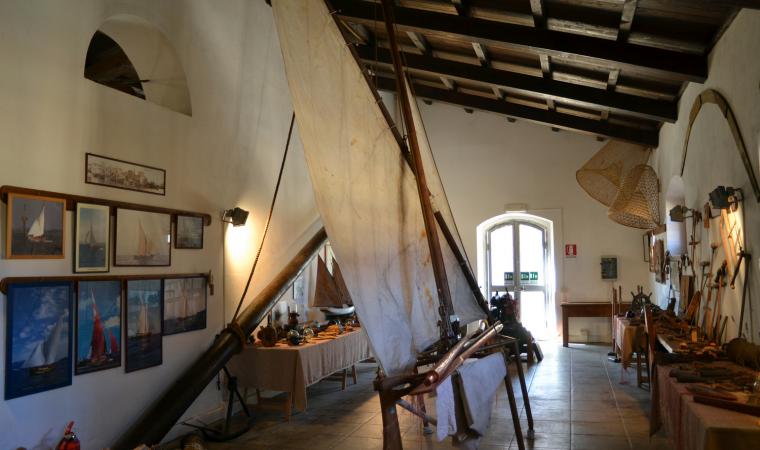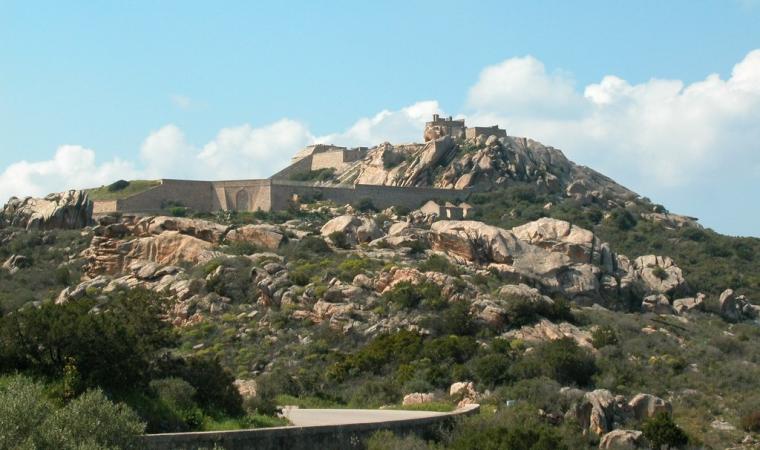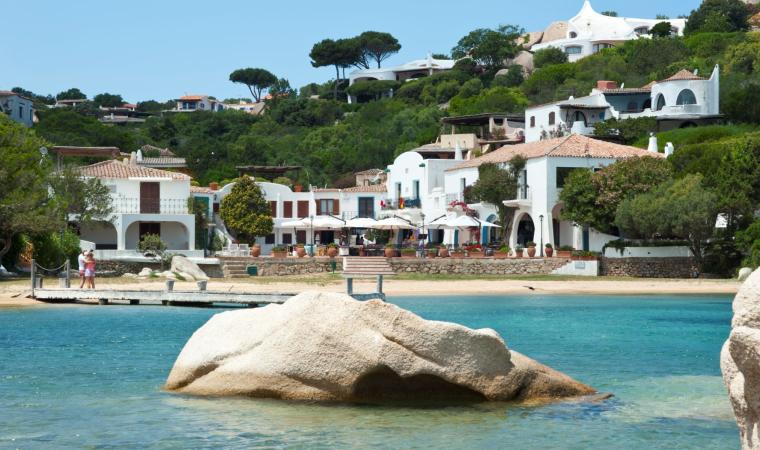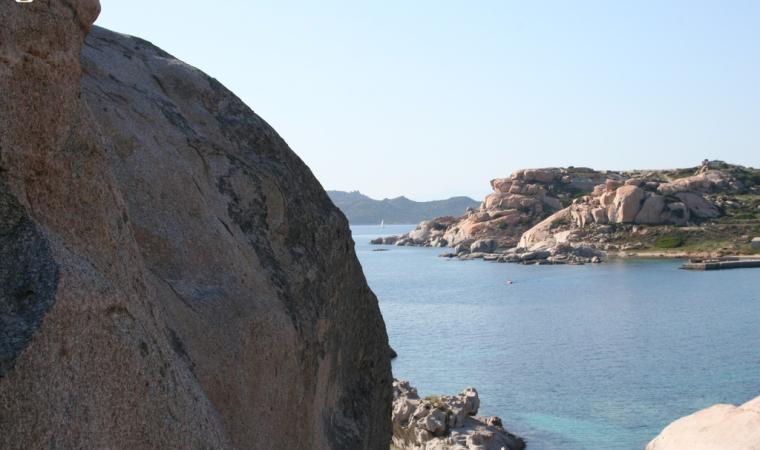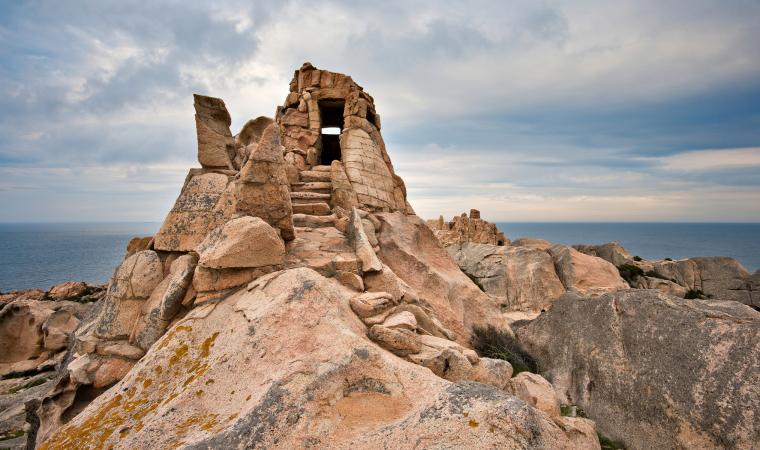According to Victor Bérard, a writer and scholar of Homer, Capo d'Orso is the only place in the Mediterranean identifiable as being the 'land of the Laestrygonians', the giant cannibals who were the protagonists of the 10th book of the Odyssey and who inflicted serious defeats and forced Ulysses' desperate escape. The hero of the tale disembarked here, near the spring of Arcacia ('of the bear'), in search of food and water for the crew, which went onto become the local population's “feast". An aura of legend surrounds the cape before the La Maddalena Archipelago National Park, taking its name from a spectacular natural sculpture that extraordinarily resembles the shape of a bear seemingly nodding towards the sea. It is the Roccia dell’Orso ('Bear Rock'), a natural monument visited by thousands of hikers. It stands on a granite elevation, being over 120 metres in height, watching over the nearby village of Palau, a renowned tourist resort nestled in a cove in northern Gallura, close to the Costa Smeralda.
It is located just over five kilometres from the village, reached by a half-kilometre panoramic path - of which around ten minutes is slightly uphill - setting out from the fort of Capo d'Orso, one of the many 18th-century military fortifications of Palau, including the battalions of Monte Altura and Talmone. The promontory offers a view over the entire park of the archipelago, also being associated with the area surrounding nature's work of art, one of the most special rock formations in all of Italy. The granite rock, “carved” over millions of years by the atmospheric agents, is smoothed, seemingly dug out from the surface, with a characteristic yellow-pinkish hue.
The promontorium arcti ('bear promontory') has been known of since time immemorial. The shape of the bear was first noted by sailors in ancient times, with its name remaining unchanged since this time. The first historical attestation comes from the Greek geographer Ptolemy (2nd century AD) who, in addition to providing coordinates, tells of the fear that the Rock Bear induced in sailors due to being able to attract ships “like a great magnet". It is not by chance that the stretch of sea before it contains numerous cargo ship wrecks hailing from various periods in time, confirming the intense commercial traffic throughout this area. The rock has always been a point of reference, being clearly visible from the sea and mentioned in the Portolan Charts, for the sailors who happened to venture off the coasts of Gallura and Bocche di Bonifacio.
The territory of Capo d'Orso is also interesting from an archaeological point of view due to the presence of several tombs in tafoni and a lithic industry from the Neolithic age. The Nuraghe Luchìa and Li Mizzani and Sajacciu Tombs of Giants are the other most famous sites within the Palau territory, where life revolves around tourism and the harbour, from where you can set out on a hike through the park. Granite promontories and sandy stretches alternate from one end of the coast to the other, such as that of La Sciumara ('outlet' in the Gallurese language) and the picturesque coastline with the Nordic atmosphere of Porto Faro. Near the port are L'Isolotto, a cove of fine white sand, and Palau Vecchio, a beach bordered by a pine forest, from where the Trenino Verde ('Green Train') sets out towards the innermost areas of Gallura. Continuing to the west, facing the island of Santo Stefano, the village of Porto Rafael unveils an exclusive and luxurious side of the area. Its most famous bay is Cala Inglese, known as the “Porto Rafael pool”. Extending nearby is the white stretch of Costa Serena. Then there is the indomitable beauty of Punta Sardegna and the exotic features of Cala Trana, nestled amongst the dunes, granite rocks, junipers and lentisks, being characterised by pinkish sand. To be found in the direction of Santa Teresa Gallura is the paradise of Isuledda or Isola dei Gabbiani. In fact, this is a peninsula joined to the mainland by an isthmus surrounded by the turquoise sea. Fanning out within the 'sandy stretch' are the Arenaria beach on one side and on the other, Porto Pollo - a dazzling beach ever caressed by the wind and the Sardinian town famed for funboarding, windsurfing and kitesurfing. Extending before the surfers' paradise is the Isolotto Cavalli and, in the distance, the beautiful La Maddalena islands of Spargi and Budelli.

